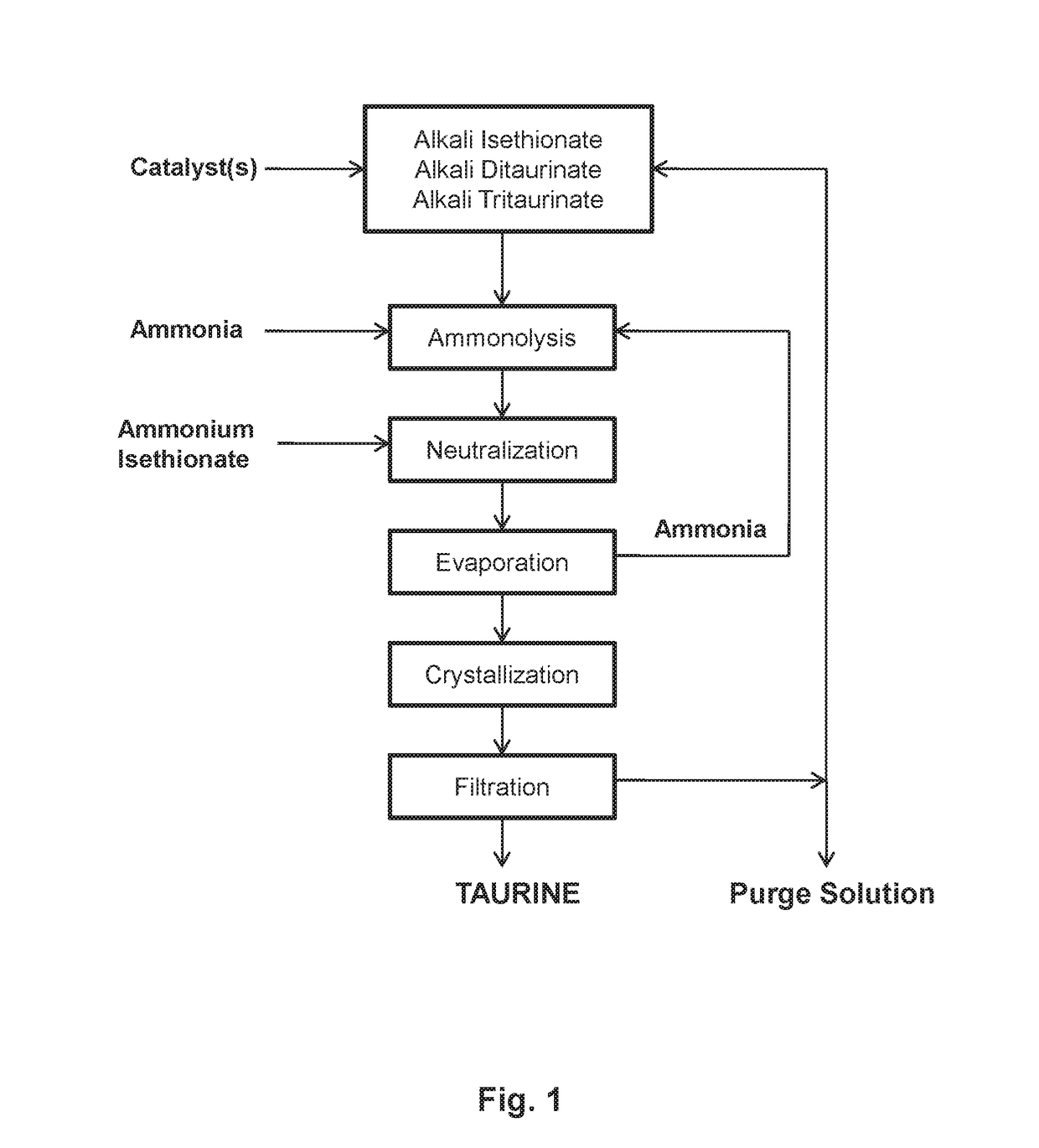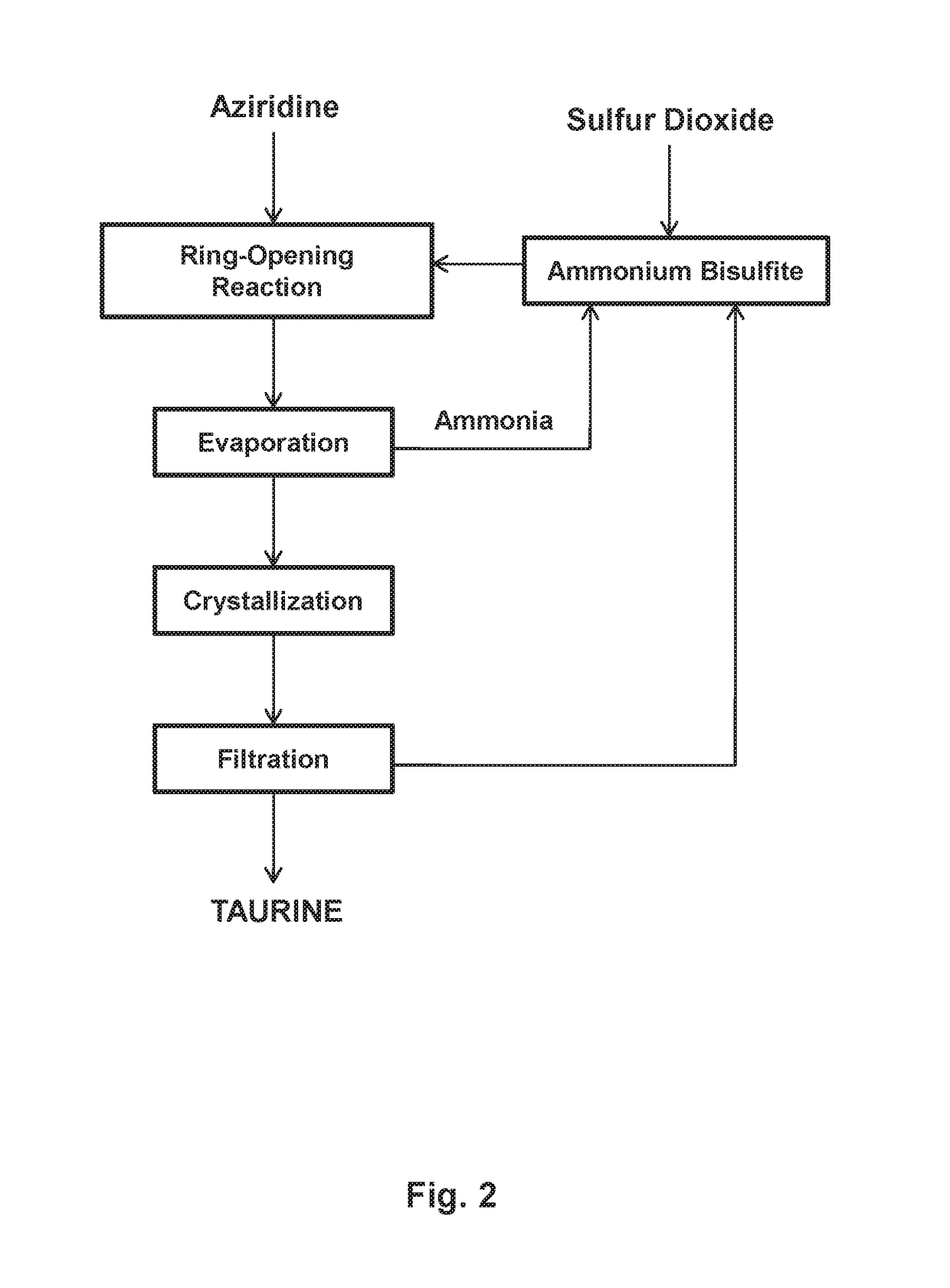Cyclic process for producing taurine
a cyclic process and taurine technology, applied in the field of cyclic process for the production of taurine, can solve the problems of large waste stream, low overall yield, and large waste stream, and achieve the effect of reducing the number of ethylene oxide production steps, increasing the difficulty of disposal, and increasing the difficulty of ethylene oxide production
- Summary
- Abstract
- Description
- Claims
- Application Information
AI Technical Summary
Benefits of technology
Problems solved by technology
Method used
Image
Examples
example 1
[0063]To a 2-L autoclave are added 1200 mL of 24% ammonia solution, 296 g of sodium isethionate, and 2 g of sodium hydroxide. The solution is heated to 260° C. for 2 hours under autogenous pressure. After cooling, 286.2 g of ammonium isethionate is added and ammonia is removed by boiling to bring the pH of the solution to pH 6.5. After heating to remove excess ammonia, concentrating and cooling to room temperature, a suspension of crystalline taurine is obtained. Taurine is recovered by filtration and dried to 189.3 g. Taurine is recovered in a yield of 75.7%.
example 2
[0064]To the mother liquor of Example 1 is added 340 g of gaseous ammonia and total volume is adjusted to 1500 mL with deionized water, followed by addition of 12.4 g of sodium hydroxide. The solution is placed in a 2-L autoclave and is subjected to ammonolysis reaction and treatment with ammonium isethionate as described in Example 1.
[0065]Taurine, 241.2 g after drying, is obtained in a yield of 96.2% on the basis of ammonium isethionate used.
examples 3 to 7
[0066]The mother liquor after isolation of taurine, after being saturated with ammonia, is repeatedly subjected to the ammonolysis reaction in the presence of 15 g of sodium hydroxide 5 times for an overall yield of taurine of 96.4% on the basis of ammonium isethionate used.
PUM
| Property | Measurement | Unit |
|---|---|---|
| temperature | aaaaa | aaaaa |
| pressure | aaaaa | aaaaa |
| temperature | aaaaa | aaaaa |
Abstract
Description
Claims
Application Information
 Login to View More
Login to View More - R&D
- Intellectual Property
- Life Sciences
- Materials
- Tech Scout
- Unparalleled Data Quality
- Higher Quality Content
- 60% Fewer Hallucinations
Browse by: Latest US Patents, China's latest patents, Technical Efficacy Thesaurus, Application Domain, Technology Topic, Popular Technical Reports.
© 2025 PatSnap. All rights reserved.Legal|Privacy policy|Modern Slavery Act Transparency Statement|Sitemap|About US| Contact US: help@patsnap.com



